A leather sofa is more than just a piece of furniture, it’s an investment in your home’s comfort and style. The rich texture, distinctive smell, and timeless appeal make leather sofas a prized possession in many UK homes. But with great furniture comes great responsibility: keeping your leather sofa clean and well-maintained is essential for preserving its beauty and extending its lifespan. Whether you’re dealing with everyday dust or facing the aftermath of a spilled cup of tea, knowing the best way to clean leather furniture can save you time, money, and heartache. In this comprehensive guide, we’ll walk you through everything you need to know about leather sofa cleaning, from routine maintenance to tackling stubborn stains.
Introduction to Leather Sofa Cleaning
Leather sofa cleaning is an essential part of maintaining the appearance and longevity of your leather furniture. Regular cleaning and maintenance can help prevent dirt and stains from accumulating on the surface, keeping your leather sofa looking its best. In this guide, we will provide you with a step-by-step guide on how to clean a leather sofa, including tips on how to remove stains, condition the leather, and maintain its natural oils. By following these steps, you can ensure that your leather sofa remains a beautiful and comfortable centrepiece in your home for years to come.
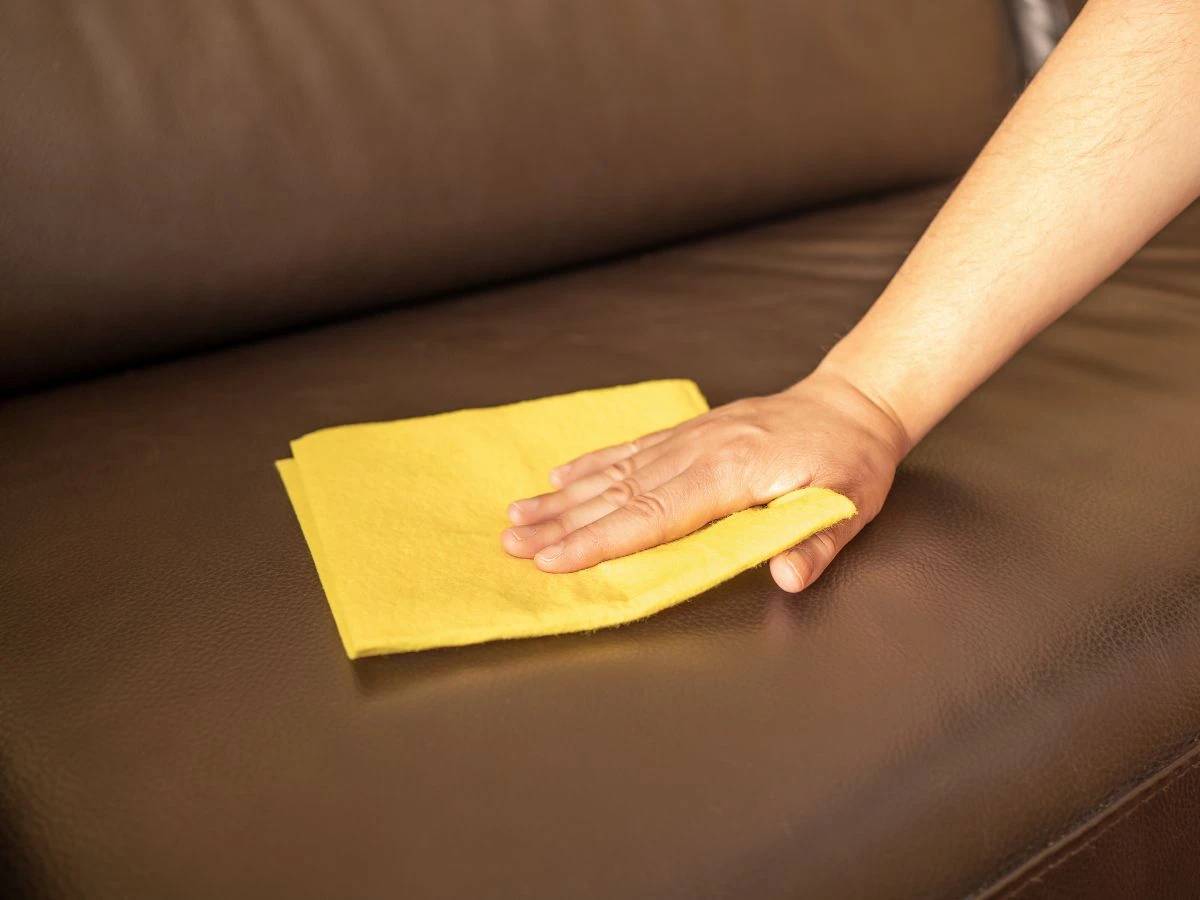
Essential Supplies for Leather Sofa Cleaning
Having the right cleaning supplies at hand makes leather cleaning more effective and reduces the risk of damage.
Recommended Cleaning Products
Leather-specific cleaners: Look for pH-balanced leather cleaners designed specifically for furniture leather.
Mild soap solution: A mixture of distilled water and a few drops of mild liquid soap can work for regular cleaning of protected leather.
Specialist stain removers: For specific issues like ink or oil stains, targeted products may be necessary.
White vinegar solution: A 50/50 mix of distilled water and white vinegar can help with mild stains on protected leather.
Tools and Materials Needed
Microfibre cloths: These are essential for gentle cleaning without scratching the leather surface. Soft-bristled brush: Useful for reaching into grooves and seams without causing damage. Spray bottle: For applying cleaning solutions evenly. Vacuum cleaner with upholstery attachment: To remove dust and debris before wet cleaning.
Products to Avoid
Harsh chemicals like ammonia or bleach will damage leather’s natural oils and colour. Abrasive cleaners or scouring pads can scratch and permanently mark leather surfaces. Excessive water can watermark or warp leather.
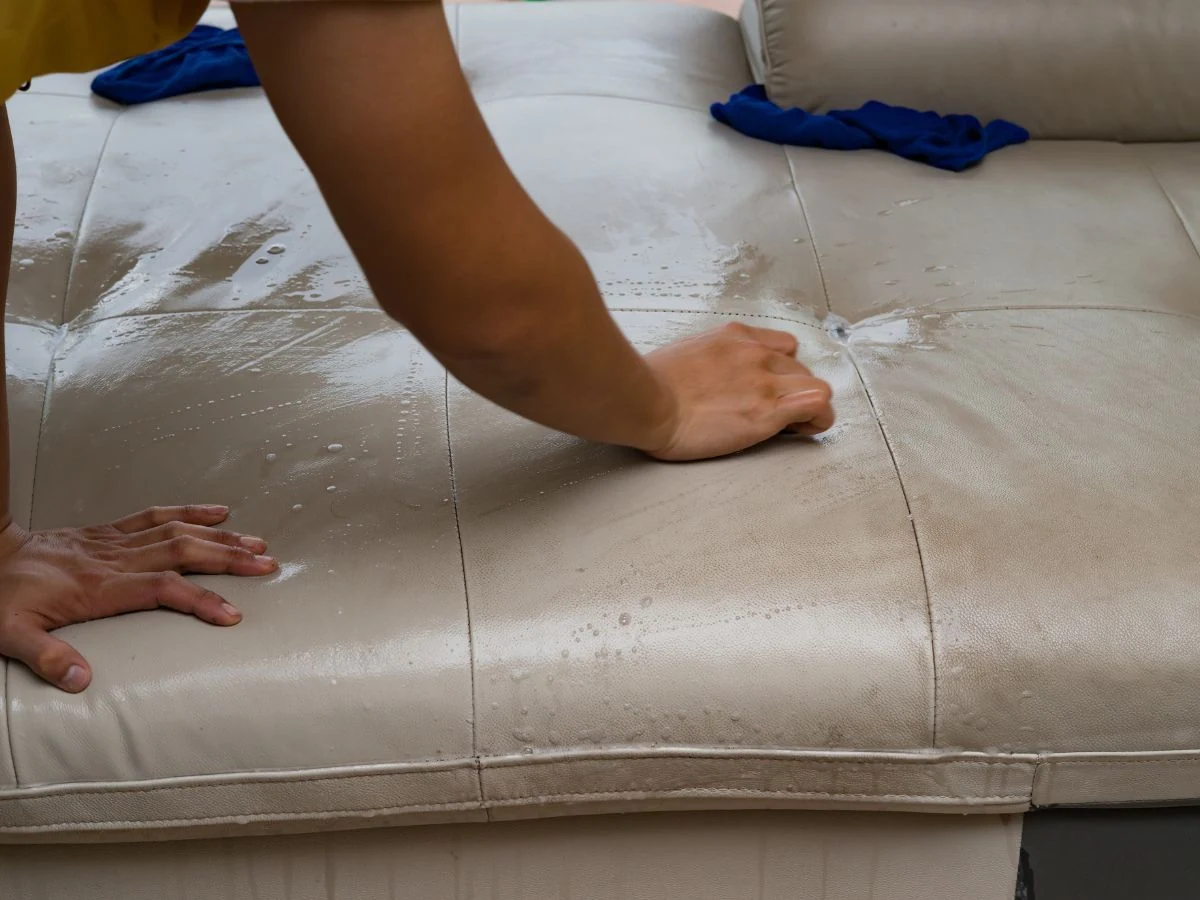
Regular Maintenance: Preventing Major Cleaning Issues
Prevention is always better than cure when it comes to leather sofa care.
Weekly Dusting Routine
Use a soft microfibre cloth or a vacuum with a soft brush attachment to remove surface dust and dirt weekly. Pay special attention to seams and folds where debris can accumulate.
For pigmented leather, lightly dampening your cloth can help pick up more dust, but ensure it’s just barely damp, not wet.
Dealing with Spills Immediately
Blot spills gently with a clean, dry cloth as soon as they happen. Don’t rub, as this can push the liquid deeper into the leather.
For water-based spills on protected leather, a slightly damp cloth can help after blotting.
Protection from Environmental Factors
Keep your leather sofa away from direct sunlight to prevent fading and drying.
Maintain at least 30 cm distance between your sofa and radiators or other heat sources, as heat can dry and crack leather.
Consider using arm covers on areas that receive the most contact to prevent body oils from degrading the leather over time.
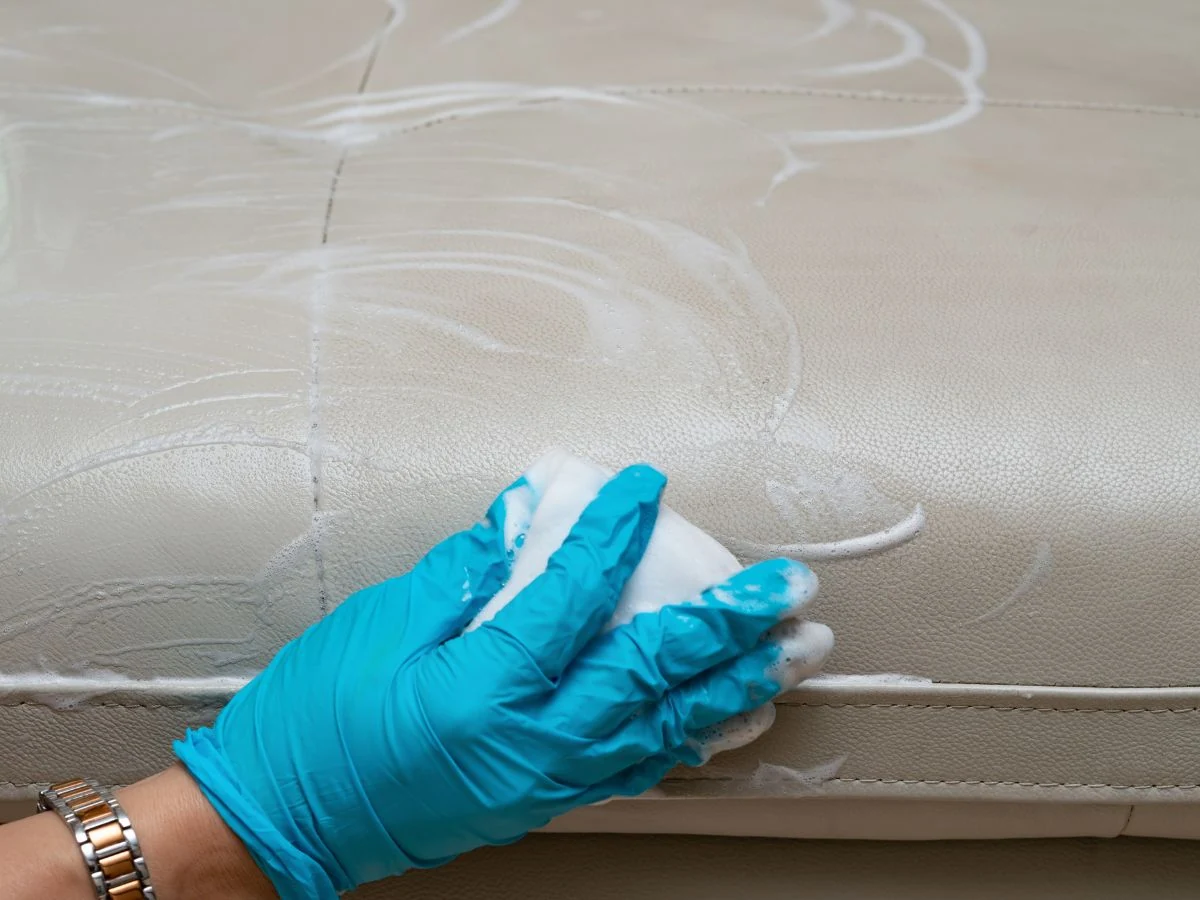
Step-by-Step Leather Cleaning Process
When it’s time for a thorough clean, follow these steps for the best results:
Preparation Steps
Clear the sofa of cushions and throws. Then vacuum thoroughly using a soft brush attachment to remove loose dirt and debris. Finally check for any specific stains that might need special treatment.
Testing Products
Always test any cleaning product on a hidden area first, like the back of the sofa or underneath a cushion. Wait 24 hours to ensure there’s no discolouration, stiffening, or other adverse reactions.
Proper Cleaning Technique
Apply your chosen cleaner to a microfibre cloth rather than directly onto the leather.
Clean with gentle circular motions, working in small sections at a time.
Pay particular attention to areas that receive the most contact, such as armrests and headrests. Be sure to wring out the cloth properly to avoid applying too much moisture and wipe off any excess water to prevent it from getting trapped under the conditioner.
Cleaning Leather Sofas with a Damp Cloth
Cleaning leather sofas with a damp cloth is a gentle and effective way to remove dirt and stains. Start by dampening a microfiber cloth with distilled water, then gently wipe down the surface of the sofa. Be sure to wipe in circular motions, as this will help to evenly distribute the moisture and prevent any streaks or marks. This method is particularly useful for regular maintenance and can help keep your leather looking fresh and clean without the need for harsh chemicals. Remember to use just enough water to dampen the cloth, excessive water can damage the leather.
Deep Cleaning Leather Sofas
Deep cleaning leather sofas requires a more thorough approach than regular cleaning. Start by vacuuming or dusting the surface to remove any loose dirt or debris. Then, use a cleaning solution specifically designed for leather to clean the entire surface of the sofa. Apply the cleaner to a microfiber cloth and work in circular motions, as this will help to evenly distribute the cleaner and prevent any streaks or marks. Be sure to follow the manufacturer’s instructions for the particular product you are using. After cleaning, wipe away any excess cleaner with a clean, dry microfiber cloth and allow the sofa to air dry naturally.
Drying Methods
Wipe away any excess moisture with a clean, dry cloth.
Allow the sofa to air dry naturally away from direct heat sources.
Never use a hairdryer or heater to speed up drying as this can damage the leather.
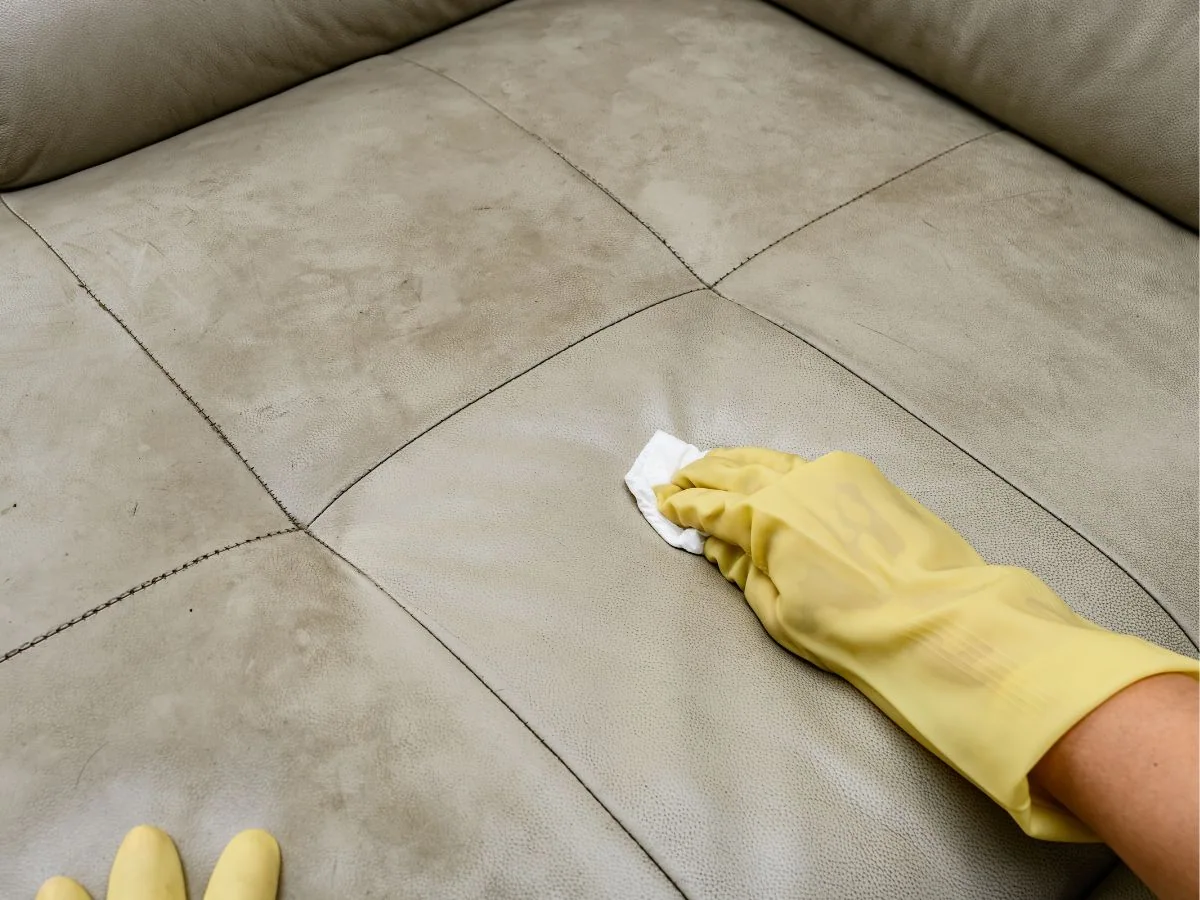
Tackling Common Stains on Leather Sofas
Different stains require different approaches for effective removal without damaging your leather.
Food and Drink Stains
For fresh spills, blot immediately with a clean, dry cloth.
For dried stains on protected leather, a mild soap solution or soapy water applied with a damp cloth often works well.
For persistent food stains, a specialist leather cleaner may be necessary.
Ink Marks
Ink stain can be particularly challenging. For ballpoint pen on protected leather, a small amount of isopropyl alcohol on a cotton swab may help, but always test first. For permanent marker or ink on unprotected leather, professional help is usually the safest option. learn how to remove pen marks from leather couches using proven methods that won’t damage your furniture. For permanent marker or ink on unprotected leather, professional help is usually the safest option.
Oil and Grease Spots
Sprinkle corn starch or talcum powder over the oil stain and leave overnight to absorb the oil before gently brushing away.
For stubborn grease marks, a leather degreaser product may be needed.
Pet-Related Stains
Clean any pet accidents immediately using an enzymatic cleaner designed for both pet stains and leather.
For pet hair, a slightly damp rubber glove can be effective at gathering fur without scratching the leather.
Removing Stains with Baking Soda
Removing stains with baking soda is a natural and effective way to clean leather sofas. Start by applying a small amount of baking soda to the stain, gently rubbing it in with a clean, dry microfiber cloth. Allow the baking soda to sit for a few minutes before wiping it away with a clean, damp microfiber cloth. This method works well for absorbing grease stains and other stubborn marks. Be sure to test a small, inconspicuous area of the sofa first to ensure the baking soda won’t damage the leather. This simple yet effective technique can help keep your leather sofa looking pristine without the need for harsh chemicals.
Conditioning and Protecting Your Leather Sofa
Cleaning is only half the battle, conditioning is equally important for maintaining leather’s suppleness and appearance.
Why Conditioning is Essential
Leather is a natural material that can dry out over time, leading to cracking and deterioration. Regular conditioning with a leather conditioner replaces natural oils lost through cleaning and everyday use.
For most leather sofas, conditioning every 6-12 months is sufficient, though high-use sofas or those in dry environments may need more frequent care.
Choosing the Right Conditioner
Look for pH-neutral conditioners specifically designed for furniture leather. Avoid products containing silicone, which can build up on the leather’s surface over time. For natural aniline leather, choose conditioners with minimal additives. Coconut oil is also a great natural option for conditioning leather, as it helps moisturise the fibers and maintain flexibility.
Application Techniques
Apply conditioner to a clean cloth, not directly to the leather. Work in small sections using gentle circular motions, Allow the conditioner to penetrate for the time recommended on the product (usually 10-15 minutes). Buff with a clean, dry cloth to remove any excess and create a subtle sheen.
Creating a Protective Barrier
After conditioning, consider applying a leather protector to create a barrier against future stains. These products can make cleaning easier and protect against UV damage, always choose protectors designed specifically for your type of leather.
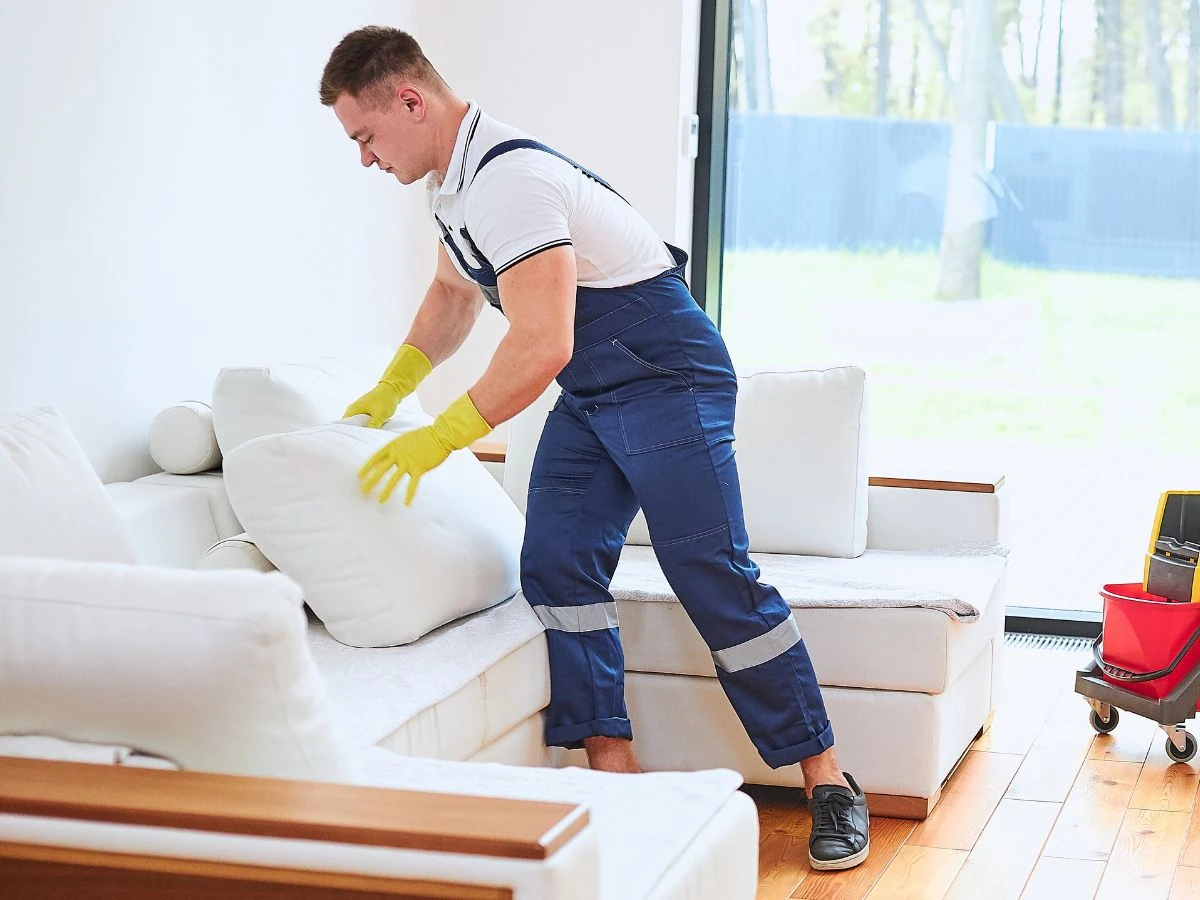
Professional Cleaning vs DIY: When to Call the Experts
While regular maintenance can be handled at home, there are times when professional help is the wiser choice.
Signs Your Leather Sofa Needs Professional Attention
Deep, set-in stains that haven’t responded to home treatments or a deep clean. Scratches, tears, or cracks in the leather surface, Significant colour fading or patchiness. Unpleasant odours that persist after cleaning. If you’re looking how to fix scratches on leather sofa, consider using a leather repair kit or seeking professional assistance like Leather Xpert.
What to Expect from Professional Cleaning
A thorough assessment of your leather type and condition. Customised cleaning solutions for your specific leather. Deep cleaning that reaches beyond surface dirt.
Professional conditioning and protection application. This specialist equipment is what protects your leather goods for years to come.
Maintaining Results After Professional Cleaning
Follow any care instructions provided by the professionals to give your leather sofa new life. Implement a regular cleaning routine to maintain results will lengthen the time needed before a professional is needed.
Schedule professional cleanings at recommended intervals (typically every 12-24 months).
Conclusion: Keeping Your Leather Sofa Looking Its Best
A well-maintained leather sofa can remain beautiful for decades, becoming more characterful with age. The key to success lies in understanding your specific leather type, establishing a regular cleaning routine, addressing spills promptly, and conditioning appropriately. Whether you’re tackling everyday dust or dealing with challenging stains, gentle methods and leather-specific products will yield the best results.
Ready for expert leather care without the hassle? Let the specialists at LeatherXpert bring your sofa back to life! Our team of leather restoration professionals uses premium products and proven techniques to clean, repair, and protect your precious leather furniture. Request your FREE, no-obligation quote today and discover why we’re the most trusted leather care experts.
